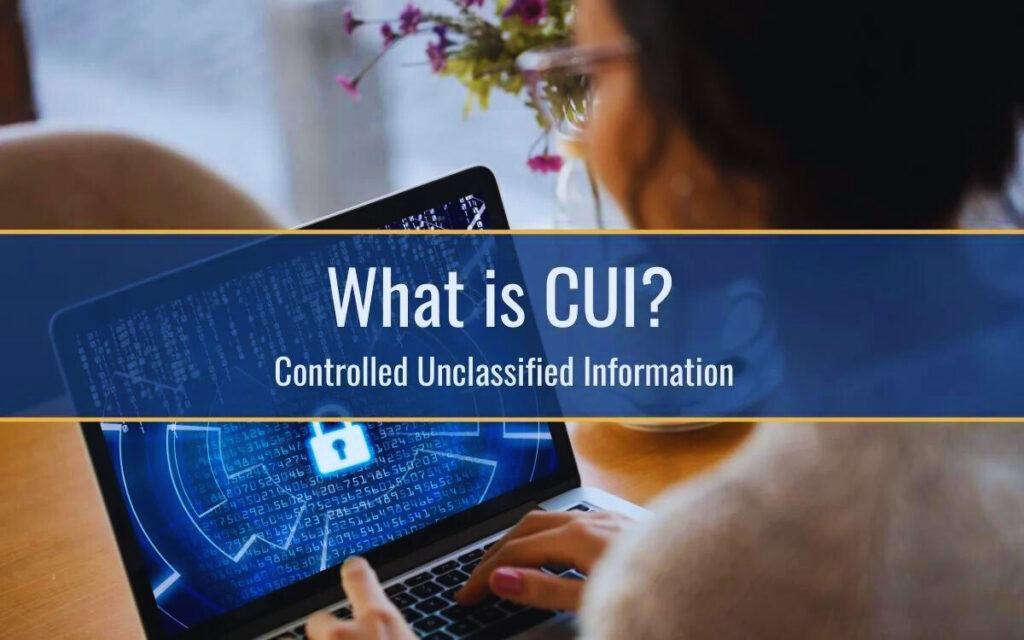The purpose of the ISOO CUI (Controlled Unclassified Information) Registry is to establish a comprehensive infrastructure for the CUI program, which includes defining all key government departments and the guidelines organizations need to follow for safeguarding and handling CUI. This registry serves as a government-wide online repository providing federal-level guidance on CUI policy and practice. It is designed to ensure that unclassified information requiring protection, due to laws and regulations, is properly identified, marked, and handled, facilitating efficient and secure access to that information while maintaining the necessary controls for its distribution and safeguarding.
Understanding CUI
What is CUI?

Controlled Unclassified Information (CUI) refers to information that, while not classified, requires protection under laws, regulations, or government-wide policies. It encompasses a wide range of information that needs safeguarding or dissemination controls, consistent with applicable laws and practices. This initiative, directed by Executive Order 13556, aims to standardize how unclassified information requiring protection is handled across more than 100 federal departments and agencies. CUI includes government-created or owned information that necessitates security measures. The initiative also introduces a uniform marking system to replace various agency-specific markings, streamlining the process and enhancing the security of sensitive information.
The Importance of Protecting CUI
Protecting Controlled Unclassified Information (CUI) is vital for several reasons:
- National Security: CUI includes sensitive data that, if compromised, could pose a threat to national security.
- Cybersecurity: DOD computer systems, which contain vast amounts of CUI, are vulnerable to cyber incidents, highlighting the critical need for robust protection measures.
- Risk Mitigation: The protection of CUI is crucial for any organization, especially those involved in national defense, to mitigate substantial risks.
- Economic Security: Safeguarding CUI is essential for maintaining trust, preserving the organization’s reputation, and preventing economic espionage.
- Federal Compliance: Protecting CUI in nonfederal systems and organizations is critical to federal agencies, underlining the importance of adhering to federal guidelines and standards.
- Information Sharing: Unlike classified information, CUI can be shared more broadly, making its protection important to prevent unauthorized access or leaks.
The ISO CUI Registry
What is the ISO CUI Registry?

The term “ISO CUI Registry” seems to be a misunderstanding or a typographical error in the context of Controlled Unclassified Information (CUI). The correct term is “ISOO CUI Registry.” The ISOO (Information Security Oversight Office) CUI Registry is a comprehensive listing maintained by the ISOO that identifies all categories and subcategories of information that the U.S. government designates as CUI. This registry is essential for the standardized management of unclassified information that requires protection due to applicable laws, regulations, and government-wide policies. The CUI Registry guides federal agencies in handling sensitive information that is not classified but still needs safeguarding to prevent unauthorized disclosure.
The Purpose of the ISO CUI Registry
Detailed Objectives
The purpose of the ISOO Controlled Unclassified Information (CUI) Registry is multifaceted, aiming to enhance the protection and standardized handling of sensitive information across the federal government. The detailed objectives include:
- Standardization of Safeguarding Measures: To provide a standardized framework for the handling, storing, transmitting, and destruction of CUI to ensure all agencies follow the same rules.
- Comprehensive Guidance: The registry acts as a government-wide online repository offering federal-level guidance on CUI policy and practice, promoting consistency across all branches of government.
- Clarification on Information Types: It provides a comprehensive guide to what types of unclassified information must be protected according to specific laws, regulations, or government-wide policies, thereby clarifying the scope of CUI.
- Regulatory Compliance: Defines CUI in accordance with applicable law, regulation, or government-wide policy, ensuring that information requiring safeguarding or dissemination controls is properly managed.
These objectives collectively work towards enhancing the security and integrity of sensitive information managed by the U.S. government and its affiliates.
How the ISO CUI Registry Works
Steps for Classification
The Controlled Unclassified Information (CUI) Registry operates through a set of structured steps to ensure the proper classification, handling, and protection of sensitive information. The key steps include:
- Implementation Process: Introduces the framework for managing CUI, including the establishment of policies and practices for handling CUI across government agencies and contractors.
- Designation: Identifies which information qualifies as CUI by determining if it requires safeguarding or dissemination controls under law, regulations, or government-wide policies.
- Identification and Marking: Each piece of CUI is marked according to the CUI Registry’s approved markings. These markings are categorized into two types: CUI Basic and CUI Specified, to facilitate proper handling and dissemination.
- Handling and Protection: Outlines the specific requirements for the secure handling, sharing, dissemination, storage, and destruction of CUI to prevent unauthorized access or disclosure.
- Decontrolling and Destruction: Provides guidelines for when and how CUI can be decontrolled (removed from CUI status) or destroyed in a manner that prevents data recovery or unauthorized access.
These steps facilitate the secure and standardized management of CUI across various sectors, ensuring compliance with national security standards.
Access and Distribution Controls
The CUI Registry provides guidelines for handling Controlled Unclassified Information, including access and distribution controls. Here’s how it works:
- Limited Dissemination Controls (LDCs): The CUI Registry specifies that using LDCs to unnecessarily restrict access to CUI is counterproductive. These controls should be applied judiciously to align with the program’s goals of balancing protection with appropriate access.
- Designation and Marking: CUI must be properly designated and marked according to the guidelines listed in the CUI Registry. These markings are authorized to designate information that requires safeguarding or dissemination controls.
- Prohibition on Unnecessary Restrictions: Both the Department of Defense Instructions and the CUI Registry emphasize that LDCs or distribution statements should not be used to unnecessarily restrict access to CUI. The goal is to retain necessary protections while not impeding necessary access and sharing within the bounds of security requirements.
- Registry as a Reference: The CUI Registry lists all approved LDC markings that can be applied to CUI, serving as a comprehensive reference for entities handling CUI to ensure compliance with standardized practices.
These controls are crucial for maintaining the security of CUI while ensuring it can be shared and accessed by authorized parties as necessary.
Compliance & Benefits
Compliance Requirements
CUI pertains to information that requires safeguarding or dissemination controls pursuant to and consistent with law, regulations, and government-wide policies. The CUI program standardizes the way the federal government, and its contractors, handle unclassified information that requires protection. Key aspects include:
- Establishing Standards and Procedures: For oversight, agency self-inspection, and resolving disputes or complaints related to CUI.
- Guidance on Classification and Handling: The ISOO CUI Registry provides detailed guidance on handling various types of CUI, promoting consistency and security.
- Addressing Deficiencies in Protection: The CUI Program aims to rectify inconsistent markings and inadequate protection measures among unclassified information.
- Providing Access to Required Markings and Authorities: The DoD CUI Registry offers information on CUI categories, including required markings and relevant authorities.
- Mapping of Security Requirements: Appendix D of NIST 800-171 offers a mapping of CUI security requirements to NIST 800-53 and ISO/IEC 27001:2013 controls.
- Central Repository and Compliance Oversight: The CUI Registry acts as a central repository for CUI categories and safeguarding requirements, overseeing agency compliance with CUI program requirements.
For compliance and benefits specifically related to ISO standards or an “ISO CUI Registry,” it would be essential to consult resources directly addressing ISO’s role in CUI management or protection, as the provided search results do not detail this aspect.
Benefits of Using the ISO CUI Registry
For Government Agencies
The benefits of using the ISOO Controlled Unclassified Information (CUI) Registry for government agencies include:
- Standardization of Handling Sensitive Information: The ISOO CUI Registry provides uniform definitions and responsibilities, ensuring sensitive information is protected consistently across federal agencies.
- Effective Safeguarding of Sensitive Information: It serves as a critical tool for federal agencies to safeguard sensitive information effectively, helping to mitigate the risk of unauthorized disclosure and enhance national security.
- Provision of a Central Repository: The registry acts as the government’s online repository for CUI policy and practice at the federal level, offering easy access to relevant policies and guidelines.
- Cost-Effectiveness and Comprehensive Security: While not directly related to the ISOO CUI Registry, using platforms like Microsoft Azure Government to protect CUI demonstrates the importance of selecting appropriate tools for CUI protection, highlighting potential benefits such as cost-effectiveness and comprehensive security measures.
For Contractors and Businesses
For contractors and businesses, especially those working with the Department of Defense (DoD) and other federal agencies, using the ISOO CUI Registry offers several benefits:
- Standardized Handling of Sensitive Information: The CUI program, as outlined in the registry, standardizes how government and contractors manage and protect controlled unclassified information, reducing confusion and enhancing compliance efforts.
- Access to a Comprehensive List of CUI Categories: The registry provides an extensive list of CUI categories and subcategories, assisting contractors in identifying specific types of information that require safeguarding, thereby ensuring that they meet federal requirements for information protection.
- Enhanced Security and Competitive Advantage: Utilizing platforms like Microsoft Azure to protect CUI, as recommended by the ISOO CUI Registry, can offer contractors robust security measures. This not only protects critical data but also can provide a competitive edge in securing government contracts by demonstrating compliance with federal requirements for information protection.
Implementing CUI Protections
Implementing protections for Controlled Unclassified Information (CUI) involves several critical steps, tailored to safeguard this sensitive information across different federal agencies and their nonfederal partners:
- Understand CUI Requirements: Familiarize with the government-wide initiative directed by Executive Order 13556, impacting over 100 departments and agencies, to standardize the handling of unclassified but sensitive information.
- Follow NIST Guidelines: Adhere to the suite of guidance provided by the National Institute of Standards and Technology (NIST) for protecting CUI in nonfederal systems and organizations. This includes implementing recommended security controls and best practices to mitigate vulnerabilities.
- Address Deficiencies: Tackle issues such as inconsistent markings and inadequate safeguarding measures by adhering to the CUI Program’s designed frameworks, which aim to standardize the management and protection of unclassified information.
- Implement Best Practices and Standards: Adopt the standards and best practices established by the CUI Program, building on existing agency policies and programs to replace legacy inconsistencies in safeguarding sensitive information.
Steps to Implement CUI Protections
Initial Assessment
The initial assessment for implementing Controlled Unclassified Information (CUI) protections involves a structured approach to ensure compliance with regulatory requirements, particularly for DoD contractors. Here are the essential steps:
- Identify CUI: Understand what information qualifies as CUI within your organization. This involves reviewing the data that flows through your firm’s networks to determine what needs protection.
- Understand Implementation Processes: Familiarize yourself with the processes of designation, handling, sharing, marking, dissemination, and destruction of CUI, as outlined in the CUI Toolkit.
- Assess Physical and Digital Environments: Evaluate both your physical and digital storage environments to ensure they meet the requirements for securing CUI. This may involve transitioning or upgrading facilities and systems.
- Conduct a Self-Assessment: Perform a self-assessment for compliance with NIST SP 800-171, which provides a framework for protecting CUI. This includes assessing security requirements and understanding the methodology to conduct such evaluations.
- Incorporate CUI Requirements into Processes: Integrate CUI safeguarding requirements into your organization’s processes. This involves setting up a framework that addresses the handling of unclassified information requiring protection.
Developing a Compliance
Creating a compliance plan for Controlled Unclassified Information (CUI) involves several critical steps designed to ensure that your organization meets the necessary requirements for handling, marking, and protecting CUI. Here are the essential steps:
- Apply Best Practices: Start with information classification, implement data loss prevention strategies, and ensure proper email retention to meet CUI requirements. Utilize marking and safeguarding tools that are easy to use.
- Follow the CUI Toolkit Guidance: The toolkit provides detailed instructions on implementation, designation, handling, decontrolling, identification, sharing, marking, dissemination, destruction, and maintaining records of CUI.
- Adopt Established Standards and Practices: Leverage the CUI Program’s standards and best practices, which are built on existing agency policies to ensure consistency in safeguarding CUI across different sectors.
- Designate a Compliance Officer: Assign a dedicated individual responsible for ensuring compliance with CUI protection requirements. This person will handle the preparation of documentation and evidence of compliance efforts.
- Develop an Incident Response Plan: Create a specific plan for responding to security incidents involving CUI. Outline the steps to be taken immediately following a breach, including notification processes and mitigation strategies.
- Implement Adequate Security for IT and Cloud Services: Ensure that security protections are in place for cloud computing services and other IT systems that handle CUI. This includes meeting specific compliance requirements for the secure processing and storage of CUI.
Training and Awareness
Implementing CUI protections requires a focused approach on training and awareness for all personnel involved in handling CUI. Here are the key steps to ensure effective training and awareness:
- Develop and Implement Training Programs: Create comprehensive training and awareness programs to educate employees on their responsibilities when handling both basic and specified CUI.
- Utilize Available Training Resources: Take advantage of existing training resources such as the CUI Training Template provided by the Department of Defense (DoD) and Industry. These resources are designed to help personnel understand the requirements for protecting CUI.
- Leverage Study Guides and Training Materials: Use study guides and training materials, such as the Fortra CUI Training Study Guide, to gain a comprehensive understanding of CUI, including security awareness training, data protection, and digital risk management.
- Complete Mandatory Training Courses: Ensure that all DoD personnel with access to CUI complete the official initial CUI training course, which also fulfills the requirement for annual refresher training. This course covers essential topics on CUI protections.
Challenges & Solutions
Implementing Controlled Unclassified Information (CUI) protections presents several challenges, but with strategic approaches, these can be effectively managed:
- Defining and Classifying CUI: The initial step involves accurately defining and classifying what constitutes CUI within the organization. This requires a thorough understanding of CUI and a comprehensive review of the organization’s information assets.
- Stakeholder Coordination: Effective implementation demands coordination among all stakeholders, including IT, security, compliance teams, and upper management. Ensuring everyone understands their role in CUI protection is critical for a unified approach.
- Information Sharing and Access Controls: Implement strict access controls and policies for information sharing to ensure that CUI is only accessible to authorized individuals. This involves both physical and digital security measures.
- Compliance and Training: Develop a compliance framework based on relevant laws, regulations, and policies. Training programs should be established to educate all employees about their responsibilities regarding CUI handling and protection.
- Understanding Company Assets: Recognize and categorize company assets into people, information, technology, and facilities to establish and maintain effective CUI protections.
Solutions and Best Practices
To effectively implement protections for Controlled Unclassified Information (CUI), follow these key steps and best practices:
- Understand CUI and Its Requirements: Gain a comprehensive understanding of what constitutes CUI and the specific safeguarding requirements set by relevant authorities, such as NIST SP 800-171 for protecting CUI’s confidentiality, integrity, and availability.
- Implement a CUI Compliance Plan: Develop and apply a plan that includes best practices for information classification, data loss prevention, and email retention. Ensure that the plan meets the requirements for marking and safeguarding CUI.
- Educate and Train Staff: Make all staff aware of what CUI flows through the company’s networks and the protection measures in place. Training should cover the identification, handling, dissemination, and destruction of CUI, as well as strategies for decontrolling and sharing CUI appropriately.
- Balance Protection with Accessibility: Manage CUI by balancing the need to protect and safeguard sensitive information from unauthorized disclosure with the necessity of ensuring that authorized holders have appropriate access. This involves implementing access controls and secure sharing practices.
Conclusion
The ISO CUI Registry might sound like bureaucratic alphabet soup, but it’s a crucial part of protecting sensitive information in a world that’s increasingly online and interconnected. By understanding and implementing its guidelines, organizations can safeguard not just their own interests but also those of their country and fellow citizens.
Read also: When Is the Daytona 500?
FAQs
Q. What exactly is Controlled Unclassified Information (CUI)?
CUI is information that requires protection according to federal laws and regulations due to its sensitive nature, but it is not classified under national security.
Q. Who needs to comply with the ISO CUI Registry?
Government agencies, contractors, and businesses handling CUI need to adhere to the registry’s guidelines to ensure the information’s security and proper handling.
Q. How can an organization start implementing CUI protections?
Begin with an assessment to identify CUI, develop a comprehensive compliance plan, and conduct training to ensure everyone is aware of the procedures and importance of CUI protection.
Q. What are some common challenges in managing CUI?
Challenges include identifying CUI accurately, ensuring consistent handling and marking, and training all relevant personnel on CUI requirements.
Q. Are there penalties for not complying with CUI requirements?
Yes, failure to comply with CUI handling requirements can result in penalties, including loss of contracts, legal consequences, and damage to reputation.




